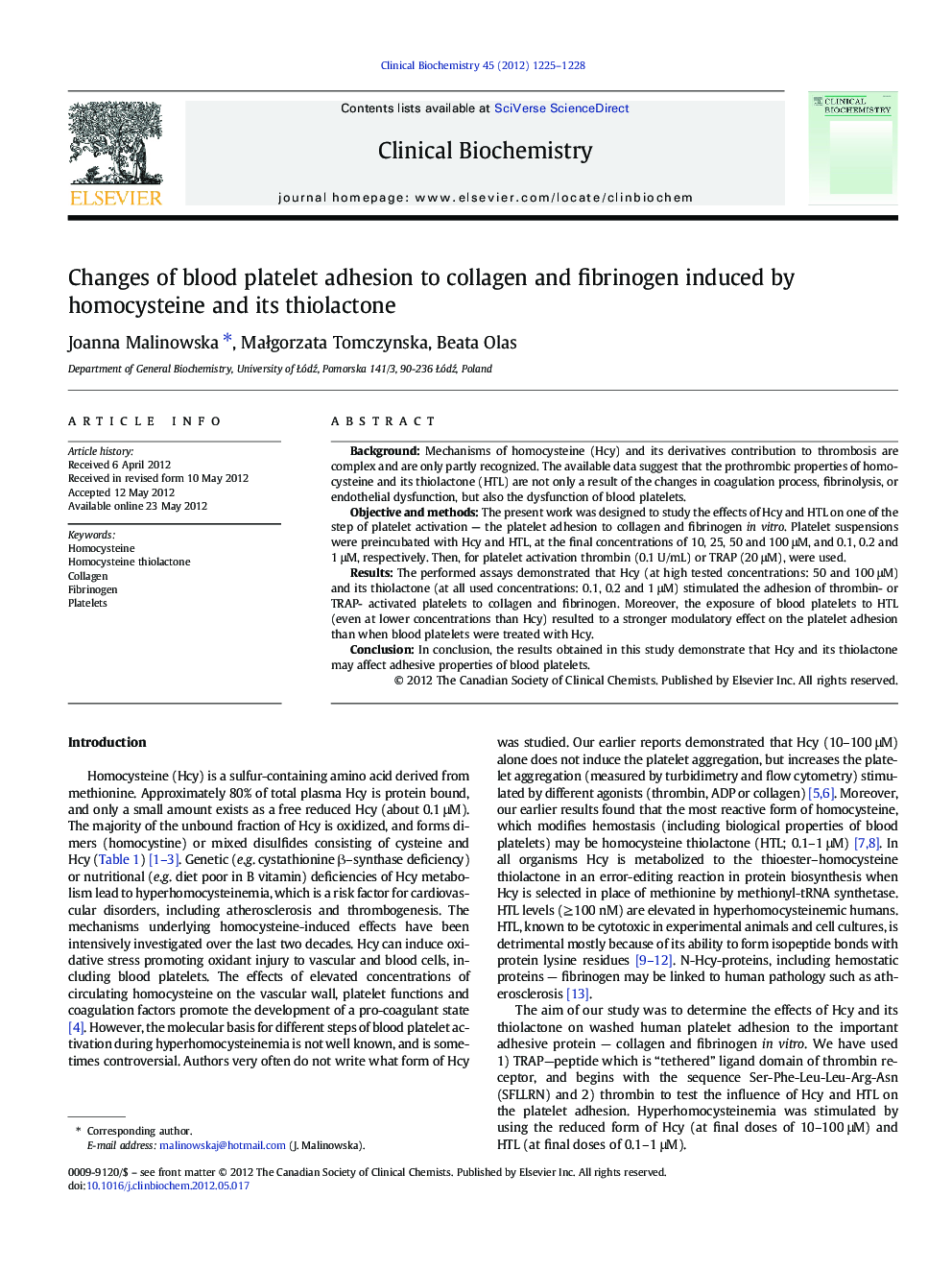| Article ID | Journal | Published Year | Pages | File Type |
|---|---|---|---|---|
| 1968880 | Clinical Biochemistry | 2012 | 4 Pages |
BackgroundMechanisms of homocysteine (Hcy) and its derivatives contribution to thrombosis are complex and are only partly recognized. The available data suggest that the prothrombic properties of homocysteine and its thiolactone (HTL) are not only a result of the changes in coagulation process, fibrinolysis, or endothelial dysfunction, but also the dysfunction of blood platelets.Objective and methodsThe present work was designed to study the effects of Hcy and HTL on one of the step of platelet activation — the platelet adhesion to collagen and fibrinogen in vitro. Platelet suspensions were preincubated with Hcy and HTL, at the final concentrations of 10, 25, 50 and 100 μM, and 0.1, 0.2 and 1 μM, respectively. Then, for platelet activation thrombin (0.1 U/mL) or TRAP (20 μM), were used.ResultsThe performed assays demonstrated that Hcy (at high tested concentrations: 50 and 100 μM) and its thiolactone (at all used concentrations: 0.1, 0.2 and 1 μM) stimulated the adhesion of thrombin- or TRAP- activated platelets to collagen and fibrinogen. Moreover, the exposure of blood platelets to HTL (even at lower concentrations than Hcy) resulted to a stronger modulatory effect on the platelet adhesion than when blood platelets were treated with Hcy.ConclusionIn conclusion, the results obtained in this study demonstrate that Hcy and its thiolactone may affect adhesive properties of blood platelets.
► We want to explain the effect of homocysteine and its thiolactone on platelet adhesion. ► For the platelets activation thrombin and TRAP were used. ► Hcy and HTL may affect adhesive properties of platelets.
